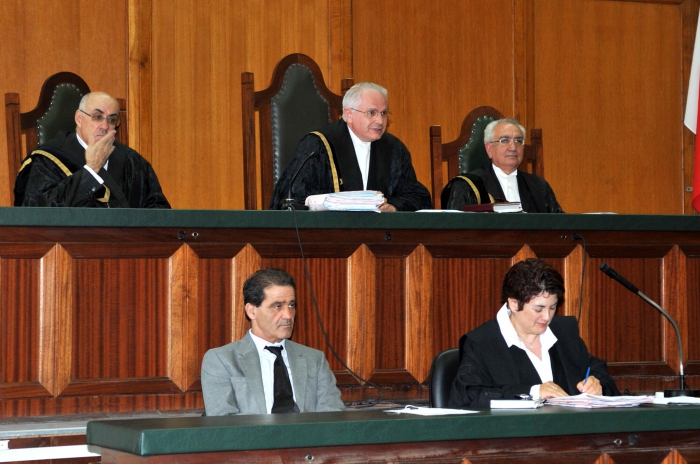Due to the fact that today around the world there is a surge of illegal behavior, it is worthwhile to consider in detail the concept and the main signs of an offense. To study the types and composition of illegal actions, the forms of responsibility for their commission.

The concept of "offense"
What is an offense (concept, signs, types of it)? An offense is an unlawful, guilty, antisocial action, behavior committed by capable citizens and entailing legal liability.
Unlike immoral act where, during its implementation, a person is condemned by society, an offense is followed by the application of coercive measures by the state. In the second case, this form of influence on offenders is necessary, since the degree of danger to society in a crime is much higher than in immoral behavior.
Most people voluntarily comply with the law, in such situations it is customary to talk about lawful behavior, which is the exact opposite of the offense. Lawful behavior allows society to function normally, contributes to its effective development and well-being. Offenses, on the contrary, disorganize, adversely affect all changes in society and the state.
The legal concept and signs of an offense are interrelated terms, since the former is formed on the basis of the latter. The consideration of the properties of the offense is a kind of detailed interpretation of its definition.
The concept, features, legal structure of the offense are the main categories that need to be analyzed in detail for a full understanding of the acts prohibited by law.

Signs of an offense
The following are considered signs of an offense:
- An offense may be expressed in the actions or omissions of persons - cases when a person was supposed to commit some act stipulated by the rule of law, but did not fulfill it (for example, tax evasion, failure to perform official duties). Thoughts or feelings of people cannot be an offense, at least until they were realized by the action.
- Wrongfulness is the second feature of an offense. The concept and characteristics of the acts in question include the fact that offenses are acts contrary to law. Violation of the law always entails the infringement of someone's interests. But at the same time, not all human interests are protected by law. For example, competition leads to limitation of one's benefits, but it is not prohibited by law.
- Guilty is the third specific feature of an offense. The concept and signs of an act that violates the law include the following: an offense is only the behavior of the person who is guilty, the guilt will be proved if it is established that the subject had the choice to commit the offense or not, the person was aware of what he was doing.
- Only a person can commit an offense. Even in the case when unlawful acts are committed by the organization, the offense is implemented by the team, that is, by people. But not every person can be guilty, but only has reached the appropriate age and reports on his actions.
- Public danger is another hallmark of the offense.The concept and signs of unlawful acts imply that the offense is a socially harmful action that damages property, the state, and the individual.
- The consequence of the offense is the application to the subject who committed it of state coercive measures.
After the concept and signs of the offense are considered, you can pay attention to the existing types of unlawful acts.

Types of Offense
All offenses can be classified according to various criteria. If we consider separately the offense and the crime (concept, signs), then we can conclude that the crime is one of the types of offense that is regulated by criminal law. In this case, the classification is made according to the degree of danger of the act. Crime can be subdivided, in turn, into subtypes according to their level of severity.
Another form of the offense is misconduct - an offense that, on the contrary, is not provided for by the Criminal Law of the Russian Federation, which is a less dangerous unlawful act than a crime. This type, depending on the degree and nature of the harm done and the specifics of the relevant sanctions, is divided into misconduct:
- administrative (violating mainly the order of state administration: violation of traffic rules, fire safety, etc.);
- disciplinary (non-compliance with official, labor or educational discipline);
- civil (non-fulfillment or improper fulfillment of obligations undertaken, conclusion of illegal transactions, causing property damage).
In some sources, there is a division of offenses depending on which branch of law they relate to, in accordance with which of them punishment is supposed. These include, for example, a criminal offense, administrative, tax offenses. Although their concept and signs have much in common, they nevertheless differ from each other.
The features of each type of unlawful acts, as a rule, are enshrined in the relevant Codes and other legislative acts. For example, the concept and signs of a tax violation are enshrined in the NKRF, especially administrative violations rights - in the AAPRF, etc.
Composition of the offense
The offense constitutes the mandatory presence of four elements: the object, subject, objective and subjective parties.
An object is social relations or phenomena of the surrounding world, social and personal values that are protected by law, something that is harmed as a result of an atrocity.
The objective side of the offense is the action itself, the causal relationship between it and the onset of adverse consequences. Additional elements of the objective side are time, place, method, instrument and situation of the offense.
A subject is a lawbreaker, an individual or legal entity. In the case when the offense is carried out by an individual citizen, we are talking about an individual entity, but if a group of citizens, then a collective entity. A person who commits an offense or a crime must be sane and have reached the appropriate age.
The subjective side of the offense is the attitude of the person who committed the crime to his act and its consequences, i.e. the presence of guilt.

Guilty offenses
As can be seen from the above, when studying an offense, concept, signs, composition, types of it, one cannot help focusing on what guilt is and what it can be.
The following forms of guilt are distinguished: intent and negligence. In turn, intent can be direct and indirect. Direct intent - this is the behavior of the offender, in which he was aware of the social danger of the act, foresaw and wished for the disastrous results.And indirect intent is the actions of a person who also was aware of a possible danger, but at the same time did not want the onset of harmful consequences or treated the result with indifference.
Negligence is a form of guilt that occurs in the form of unlawful negligence or unlawful arrogance. In the first case, the offender does not assume the possible danger of his actions, does not foresee harm as a result of their commission, although he must be aware of and assume them. In the second case, he foresees the possibility of negative outcomes and is aware of the danger, but unreasonably hopes to be prevented by their own efforts.
Motive of the offense
When considering an offense, concept, signs, types of it, it is also necessary to analyze in detail such an optional element of its subjective side as motive.
The motive of the offense - these are the grounds, reasons that guided the offender. Motives can be qualified depending on the severity of the crime:
- Antisocial (political, violently aggressive, mercenary and mercenary-violent nature).
- Social (anarcho-individualistic, selfish plan).
- Pseudo-social (related to the interests of individual social groups, formed on false corporatism, partnership).
- Protosocial (growing from socially positive reasons to negative social ones, for example, revenge, jealousy, excess of acceptable defense when detaining a criminal). They are characterized by a high degree of emotionality, affectiveness.
Most often, some motives are inherent in intentional offenses (self-interest, jealousy, revenge), and others committed by negligence (egotism, boasting, etc.). The grounds for the implementation of the offense are carefully studied by the investigation, since depending on what kind it is, the form and degree of punishment can change.
Purpose of the offense
The purpose of the offense is the understanding by the offender of the result of the committed action, an idea of it.
Identifying the purpose of the wrongful act is also a very important point in the process of legal proceedings. In some cases, its presence is an obligatory element of the subjective side of the crime, that is, its absence will no longer allow criminal prosecution. But sometimes a lack of purpose simply indicates the social neglect of the personality of the accused.
The purpose and motive of the offense are very similar, they are difficult to distinguish. The first differs from the second in that it determines the direction of the action, the goal is an idea of the results that the offender seeks to achieve, and the motive is what he is guided by when committing the crime.

Responsibility for committed offenses
Having examined the concept, signs and composition of the offense, we can proceed to the forms and types of responsibility for their commission. These include: civil law, material, disciplinary, administrative and criminal liability.
Civil liability is a coercive means of imposing burdensome property obligations on the offender in order to restore the property condition of the victim. This type of liability may be contractual or non-contractual in nature.
Liability is the duty of one side to compensate for material damage caused to the other side, if there is an employment contract between these entities. As a rule, it is the duty of the employee to the employer or the employer to the employee.
Disciplinary responsibility is the punishment for committing disciplinary misconduct. This form of liability occurs only in case of violation of labor discipline in the framework of labor legislation.
Administrative responsibility, as well as the administrative offense itself (concept, features, composition) are considered in separate chapters of this article.
Criminal liability is a form of legal responsibility that an offender bears for committing crimes. This form of obligation is the most stringent of all the above, since such penalties are imputed for the most serious offenses.
Responsibility for committing unlawful acts does not occur in those cases where the necessary defense took place or an urgent need and also if the person who committed the crime was insane.
Administrative offense
The concept and signs of an administrative offense are enshrined in the Code of Administrative Offenses of the Russian Federation. According to this source, an administrative offense is an unlawful act, with the presence of guilt, for which the relevant code provides for administrative liability.
Administrative punishment may be incurred by a person who has reached the age of 16 by the time the offense is committed. In exceptional cases, citizens aged 16-18 can be exempted from this with the permission of the commission on minors. Adult persons can also avoid punishment in situations where the offense was insignificant. The court or official may decide simply to give an oral warning.
In addition to the minimum age that a person must reach in order to bring to this type of responsibility, the offender must be sane.
The concept and signs of an administrative offense are identical to the general definition and properties of the offense, with the exception of one specific attribute of this type of violation. A special property of an administrative offense is the involvement of the person who committed it, namely, administrative responsibility.
Causing harm in an emergency is not an administrative offense. That is, if in order to eliminate the danger that directly threatens the person or her rights and this danger cannot be eliminated by other means, the damage is less than the harm prevented.

Administrative responsibility of various categories of persons
In addition to clarifying what an administrative offense is (concept, characteristics, types), the Code of Administrative Offenses contains instructions on responsibility for its commission for various categories of persons.
Military, persons called up to military fees employees of the Investigative Committee, ATS, criminal executive structures, the State Fire Fighting Service, drug trafficking control bodies, and customs agencies with certain ranks bear disciplinary responsibility for committing administrative offenses. The exceptions are the violations listed in Article 2.5 of the Code of Administrative Offenses of the Russian Federation, part 2.
An administrative offense (concept, signs, composition) committed by an alien (enterprise), stateless people, does not differ from the unlawful acts of other categories of persons, with the exception of one nuance: foreigners who are immune from the administrative jurisdiction of the Russian Federation are liable to punishment only after a decision This issue in accordance with the laws of international law.
Administrative punishment can be incurred by vehicle owners or owners of land and real estate in the event of fixing violations associated with the use of this property, cameras or cameras operating in a special automatic mode. Such persons can avoid this responsibility if they prove that at the time of the offense they did not use / own the vehicle, land or property, while they could not prevent the commission of an unlawful act.
Features of administrative responsibility for legal entities:
- in cases where several organizations have merged, and one legal entity has previously committed an offense, the newly created legal entity must be punished;
- in situations when there is a division of a legal entity into several, the newly created legal entity is brought to responsibility, to which, accordingly, with the separation balance sheet, the duties and rights of the transactions or property that are the object of the unlawful act are transferred;
- upon joining one enterprise to another, the affiliate will be punished;
- when changing the form of a legal entity, the responsibility arises again.

Thus, the concept and signs of the offense, the types and composition of these illegal acts were described above. This information is necessary for a clearer understanding of this very common social phenomenon. They allow you to analyze the essence of the offenses, and therefore, to identify the reasons for their commission.
